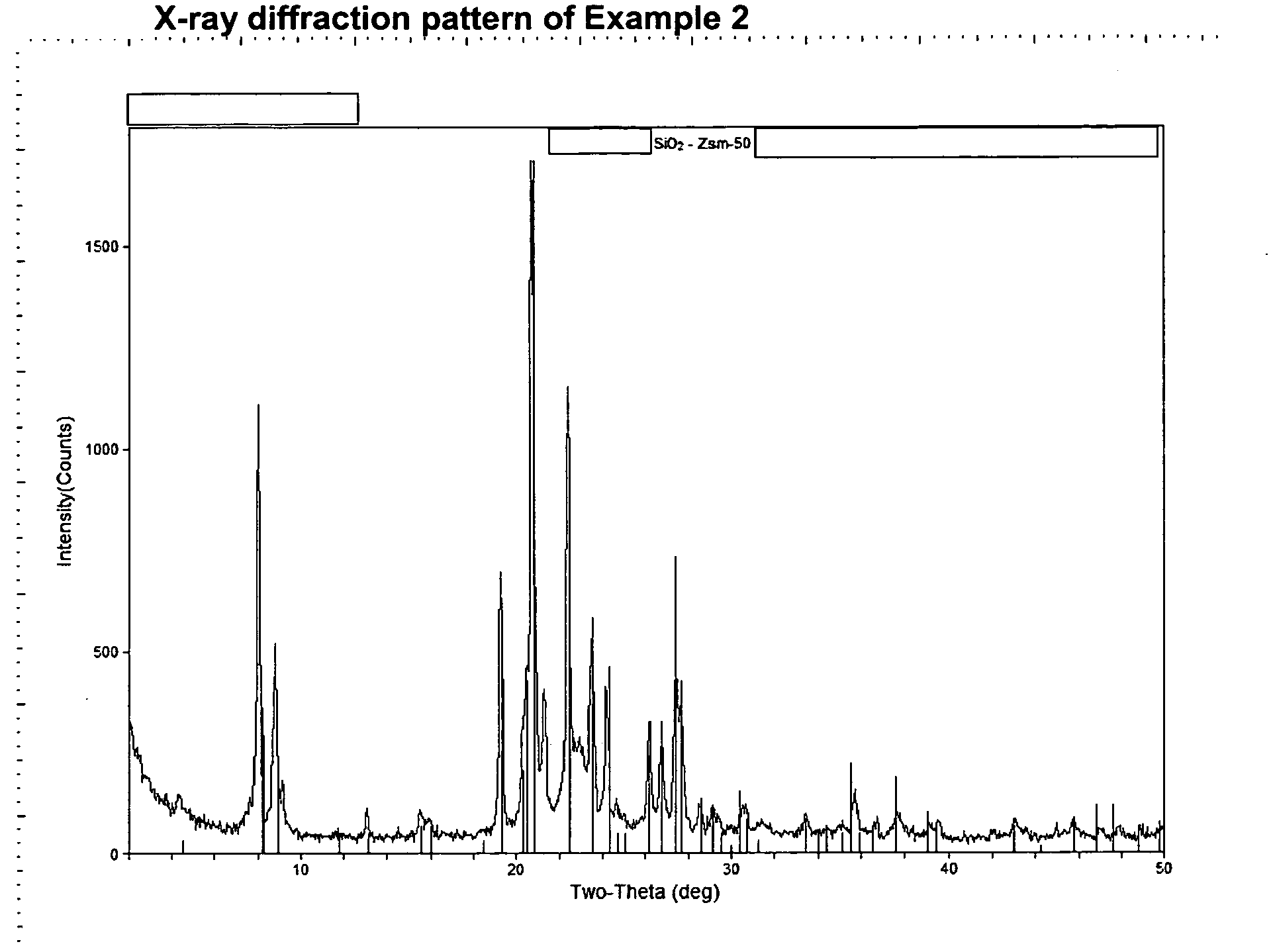High throughput process for manufacturing molecular sieves
a technology of molecular sieves and throughput, which is applied in chemical/physical processes, catalyst activation/preparation, bulk chemical production, etc., can solve the problems of high cost of synthetic molecular sieves, and achieve high throughput, low cost, and high throughput.
- Summary
- Abstract
- Description
- Claims
- Application Information
AI Technical Summary
Benefits of technology
Problems solved by technology
Method used
Image
Examples
examples
[0088]The SEM images were obtained on a JEOL JSM-6340F Field Emission Scanning Electron Microscope (SEM), using a magnification at a voltage of 2 keV.
[0089]In these examples, the XRD diffraction patterns of the as-synthesized materials were recorded on an X-Ray Powder Diffractometer using copper Kα radiation in the 2θ range of 2 to 40 degrees.
example 1
[0094]A synthesis mixture was prepared containing the following ingredients: a sodium aluminate solution (12.34 wt. % NaOH and 3.06 wt. % Al(OH)3 in water, Alcoa Corporation, Pittsburgh, Pa., USA), a 60 wt. % solution of triethylene tetraamine (R) in water (Sachem Chemicals), Ultrasil VN 35P (92.4 wt. % of SiO2) and a 50 wt. % NaOH solution in water. The synthesis mixture had the following molar composition:
0.06Na2O: 0.05Al2O3: 1.241 R: SiO2: 20H2O
The mixture was transferred to an autoclave and heated to 250° C. with a ramp rate of 25° C. / hr. The crystallization was continued for 8 hrs at 250° C.
[0095]After crystallization a solid product was recovered from the crystallization mixture, washed, and dried at 120° C. XRD of the dried solid product showed it to be a mixture of mordenite and ZSM-5. The yields, solids content, and hourly throughput are summarized in Table 1 below.
example 2
[0098]A synthesis mixture was prepared containing the following ingredients: a sodium tetraborate decahydrate (NaB4O7.10H2O), a 50 wt. % solution of tetraethyl ammonium bromide (R) in water (Sachem Chemicals), Ultrasil VN 35P (92.4 wt. % of SiO2) and a 50 wt. % NaOH solution in water. The synthesis mixture had the following molar composition:
0.085Na2O: 0.0013B2O3: 0.01 R: SiO2: 6.88H2O
The mixture was transferred to an autoclave and heated to 240° C. with a ramp rate of 25° C. / hr. The crystallization was continued for 24 hrs at 240° C.
[0099]After crystallization a solid product was recovered from the crystallization mixture, washed, and dried at 120° C. XRD (FIG. 1) of the dried solid product showed it to be ZSM-50. The SEM image (FIG. 2) of the solid product showed cubic morphology. The yields, solids content, and hourly throughput are summarized in Table 1 below.
PUM
| Property | Measurement | Unit |
|---|---|---|
| Temperature | aaaaa | aaaaa |
| Temperature | aaaaa | aaaaa |
| Temperature | aaaaa | aaaaa |
Abstract
Description
Claims
Application Information
 Login to View More
Login to View More - R&D
- Intellectual Property
- Life Sciences
- Materials
- Tech Scout
- Unparalleled Data Quality
- Higher Quality Content
- 60% Fewer Hallucinations
Browse by: Latest US Patents, China's latest patents, Technical Efficacy Thesaurus, Application Domain, Technology Topic, Popular Technical Reports.
© 2025 PatSnap. All rights reserved.Legal|Privacy policy|Modern Slavery Act Transparency Statement|Sitemap|About US| Contact US: help@patsnap.com



